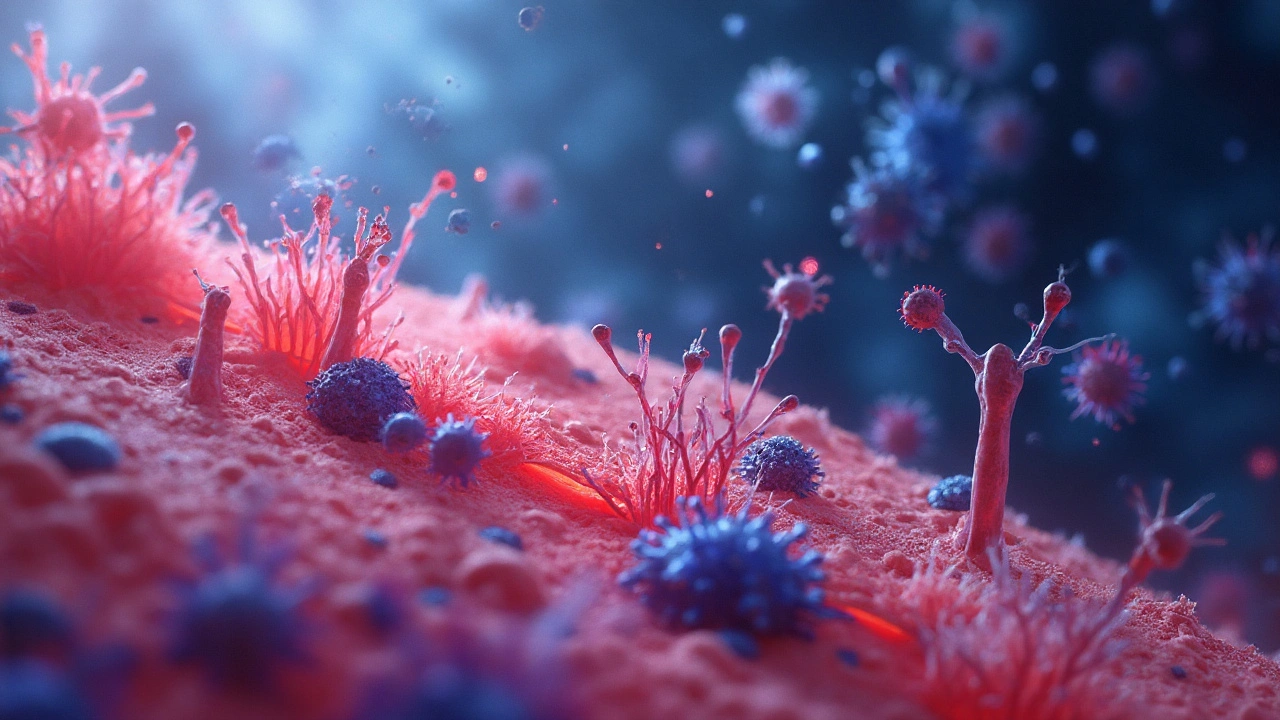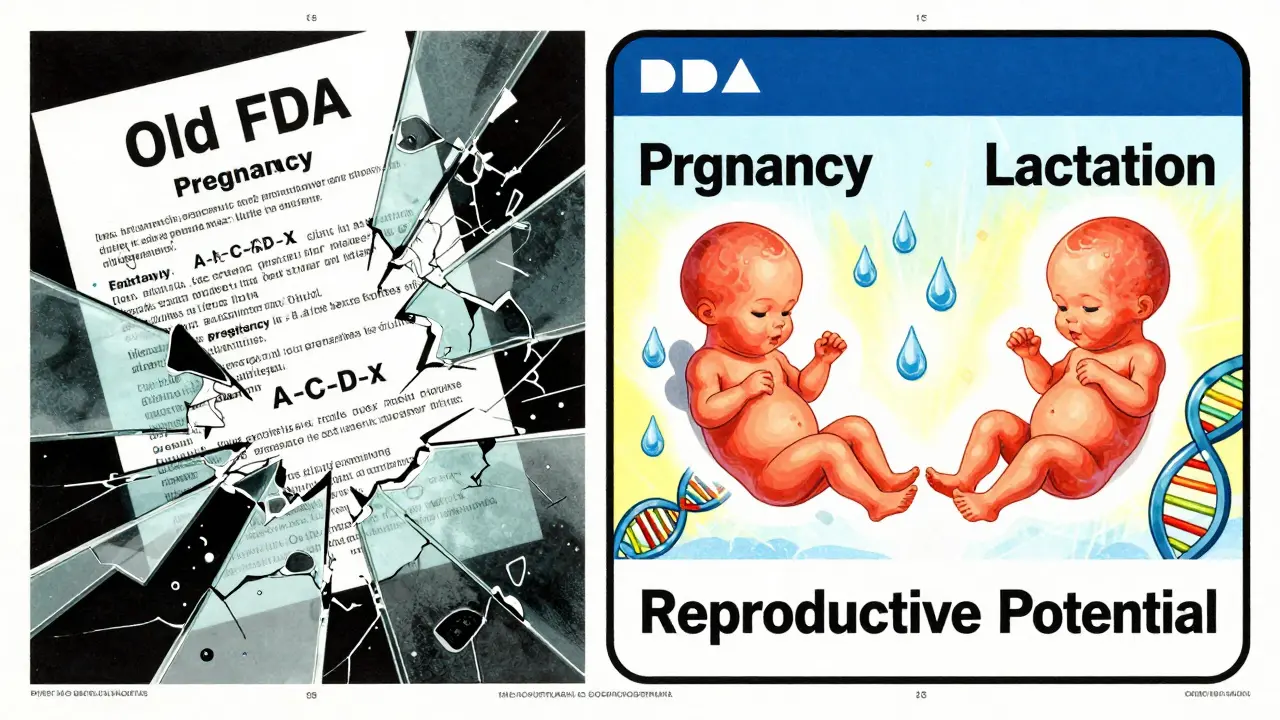Azathioprine Pemphigoid Risk Checker
Azathioprine is a purine‑analog immunosuppressant that’s been used for decades to control organ‑rejection, inflammatory bowel disease, and certain skin disorders. Its active metabolite, 6‑mercaptopurine, interferes with DNA synthesis, dampening the immune response. While effective, clinicians have reported a puzzling link to pemphigoid, an autoimmune blistering disease that targets the skin’s basement membrane.
Why the Connection Matters
Patients on long‑term azathioprine may develop painful, tense blisters that mimic bullous pemphigoid (BP). The condition can be mistaken for drug rash or infection, delaying proper treatment. Recognising the pattern helps doctors stop the drug earlier, avoid unnecessary steroids, and prevent permanent scarring.
Understanding Pemphigoid
Pemphigoid refers to a group of autoimmune blistering diseases characterised by antibodies against hemidesmosomal proteins (BP180, BP230) that hold the epidermis to the dermis. The classic form, bullous pemphigoid, mainly affects people over 60, but drug‑induced variants can appear at any age.
How Azathioprine May Trigger Autoimmunity
Two mechanisms dominate the discussion:
- Immune dysregulation: By suppressing T‑cell activity, azathioprine may paradoxically shift the balance toward auto‑antibody production when the drug is tapered or stopped.
- Metabolic variance: The enzyme thiopurine methyltransferase (TPMT) converts azathioprine to inactive metabolites. Low TPMT activity leads to higher active drug levels, increasing off‑target immune effects that could spark pemphigoid.
Incidence and Clinical Evidence
Large pharmacovigilance databases (e.g., FDA’s Adverse Event Reporting System) list fewer than 100 confirmed azathioprine‑associated pemphigoid cases worldwide. In a 2022 retrospective cohort of 4,500 patients on azathioprine for inflammatory bowel disease, 0.8% developed bullous lesions within 12 months-significantly higher than the background 0.1% rate for idiopathic BP.

Risk Factors to Watch
Not every patient will suffer. The strongest predictors include:
- Age > 60 years
- Low TPMT activity (<10 U/mL)
- Concurrent corticosteroid taper or abrupt drug withdrawal
- History of other autoimmune skin conditions (e.g., psoriasis)
Diagnosing Drug‑Induced Pemphigoid
Key steps:
- Clinical exam - look for tense bullae on flexor surfaces and erythematous plaques.
- Skin biopsy - direct immunofluorescence shows linear IgG/C3 at the basement membrane.
- Serology - ELISA for BP180/BP230 antibodies often elevated.
- Drug timeline - correlate onset with azathioprine initiation or dose change.
If the link is suspected, a drug rechallenge is generally avoided; instead, the medication is tapered or substituted.
Management Strategies
Stopping azathioprine is the first line. Alternatives include:
| Drug | Mechanism | Typical Dose | Documented Pemphigoid Risk | Key Monitoring |
|---|---|---|---|---|
| Azathioprine | Purine analog; inhibits DNA synthesis | 1-3mg/kg/day | Low‑to‑moderate (0.1-0.8% in cohorts) | TPMT activity, CBC, liver enzymes |
| Mycophenolate mofetil | Inhibits inosine monophosphate dehydrogenase | 1-2g/day | Very low (isolated case reports) | Renal function, CBC |
| Methotrexate | Folate antagonist; anti‑inflammatory | 7.5-25mg/week | Negligible (no consistent reports) | Liver enzymes, pulmonary assessment |
For patients who need a steroid‑sparing agent, mycophenolate mofetil is often the go‑to substitute because its pemphigoid signal is minimal. Methotrexate works well for older adults with comorbid arthritis.
Practical Tips for Clinicians
- Screen TPMT activity before starting azathioprine; adjust dose accordingly.
- Document any skin changes promptly; consider dermatology referral within two weeks of lesion appearance.
- If pemphigoid develops, initiate topical high‑potency steroids while you taper azathioprine.
- Educate patients on self‑monitoring - look for new blisters, itching, or redness after any dosage change.
Related Concepts and Next Steps
Understanding azathioprine’s risk profile opens the door to broader topics such as pharmacogenomics, which studies how genetic variations influence drug response. Readers interested in drug‑induced skin reactions may also explore lupus eritematosus systemicus (LES) drug reactions or the management of immune‑mediated adverse events from biologics. Future articles could cover "How to Interpret TPMT Test Results" or "Choosing the Right Immunosuppressant for Elderly Patients".

Frequently Asked Questions
Can azathioprine cause bullous pemphigoid?
Yes, although rare, azathioprine has been linked to drug‑induced pemphigoid. Reported rates range from 0.1% to 0.8% in specific patient cohorts, especially in older adults or those with low TPMT activity.
What symptoms should raise alarm while on azathioprine?
New or worsening itchy skin, tense blisters, or red patches that don’t respond to antihistamines should prompt a dermatologist consult. Early detection cuts down on steroid exposure and scarring.
Is stopping azathioprine enough to resolve pemphigoid?
Discontinuation is crucial, but most patients also need topical or short‑course systemic steroids to control inflammation while the immune system resets. Alternative immunosuppressants can be introduced once the rash clears.
How does TPMT testing influence azathioprine safety?
Low TPMT activity leads to higher concentrations of active metabolites, raising the risk of both bone‑marrow suppression and off‑target immune effects like pemphigoid. Patients with deficient TPMT should start at <0.5mg/kg/day or consider a different drug.
Are there safer alternatives for patients prone to skin autoimmunity?
Mycophenolate mofetil and methotrexate have far fewer reports of pemphigoid. Choice depends on the underlying disease, renal function, and patient tolerance. Discuss options with a rheumatologist or dermatologist.
Azathioprine remains a valuable tool in modern medicine, but awareness of its pemphigoid risk empowers clinicians and patients to act quickly, minimise complications, and choose the safest long‑term therapy.




kristina b
September 22, 2025 AT 20:17In the labyrinth of immunosuppression, azathioprine stands as a double‑edged sword, offering salvation to patients while simultaneously courting the specter of autoimmunity. The paradoxical emergence of pemphigoid under the aegis of this purine analog invites contemplation of the delicate equilibrium between immune restraint and dysregulation. One must first acknowledge the venerable history of azathioprine, a drug whose origins trace back to the mid‑twentieth century, and whose therapeutic reach extends from organ transplantation to inflammatory bowel disease. Yet, within its molecular embrace lies the potential to perturb the finely tuned network of T‑cell signaling, thereby fostering an environment where autoreactive antibodies may prosper. The mechanistic hypothesis posits that suppression of regulatory T‑cells may inadvertently unshackle B‑cell clones, culminating in the production of anti‑hemidesmosomal antibodies characteristic of bullous pemphigoid. Moreover, the metabolic conduit mediated by thiopurine methyltransferase (TPMT) introduces a layer of inter‑individual variability, for those with diminished enzymatic activity experience heightened concentrations of active metabolites, amplifying off‑target effects. Clinical observations corroborate this narrative: in cohorts of patients surpassing sixty years of age, the incidence of blistering eruptions appears disproportionately elevated, especially when low TPMT activity coexists. Epidemiological data, albeit sparse, reveal a signal; a retrospective analysis documented an incidence of 0.8 % in azathioprine‑treated individuals versus a baseline of 0.1 % in the general population. The temporal relationship often manifests within the first twelve months of therapy, yet cases have been reported after prolonged exposure, underscoring the necessity for vigilant dermatologic surveillance. From a pragmatic standpoint, the risk calculator embedded within the article serves as a modest tool, aggregating age, TPMT status, treatment duration, and prior dermatologic history into a composite score that stratifies patients into low, medium, or high risk categories. While the calculator is not a substitute for clinical judgment, it offers a scaffold upon which physicians may construct individualized monitoring plans. Patients presenting with tense, erythematous bullae should be evaluated promptly, with skin biopsy and immunofluorescence studies employed to differentiate drug‑induced pemphigoid from other dermatologic entities. Therapeutic recalibration may involve tapering or discontinuing azathioprine, coupled with targeted immunosuppression such as topical corticosteroids or doxycycline in milder cases. In summation, the interplay between azathioprine and pemphigoid epitomizes the intricate dance of immunomodulation, wherein the promise of disease control is counterbalanced by the specter of autoimmunity, demanding both astute clinical awareness and patient education.
Ida Sakina
October 4, 2025 AT 10:04Azathioprine's therapeutic benefits cannot be denied yet its association with pemphigoid warrants scrutiny. The data suggest a correlation particularly in older patients with reduced TPMT activity. One must weigh the risk against the necessity of disease control. Discontinuation may be prudent when blistering lesions emerge. Vigilant monitoring remains essential.
Amreesh Tyagi
October 15, 2025 AT 23:51Risk calculators are just flashy gimmicks; clinicians should trust their gut. They rarely capture the nuances of each patient.
Brianna Valido
October 27, 2025 AT 12:37Wow this tool is super helpful! 😊 It makes tracking risk feel way easier. Keep sharing these gems, they really boost confidence.
Caitlin Downing
November 8, 2025 AT 02:24That's a solid overview, I appreciate the detail. Gonna keep an eye on my TPMT results cuz they *really* matter. The risk chart looks user‑friendly and colorful.
Robert Jaskowiak
November 19, 2025 AT 16:11Oh great, another calculator to tell me I might get blisters. Because what I really needed was more numbers on my screen. Guess I’ll celebrate my “low risk” with a donut.
Julia Gonchar
December 1, 2025 AT 05:57Azathioprine is metabolized primarily by hypoxanthine‑guanine phosphoribosyltransferase (HGPRT) before TPMT acts, leading to 6‑mercaptopurine formation. Variants in the NUDT15 gene also affect toxicity, especially in Asian populations. Monitoring complete blood counts weekly for the first month is standard practice. The drug's half‑life is roughly 5 hours, but immunosuppressive effects persist longer due to lymphocyte depletion. Therefore, any cutaneous adverse event should prompt a review of dosing and metabolism pathways.
Annie Crumbaugh
December 12, 2025 AT 19:44Sounds like a handy checklist for doctors.
Vic Harry
December 24, 2025 AT 09:31We shouldn't let foreign pharma dictate our skin health. If azathioprine causes blisters, kick it out now. Simple as that.